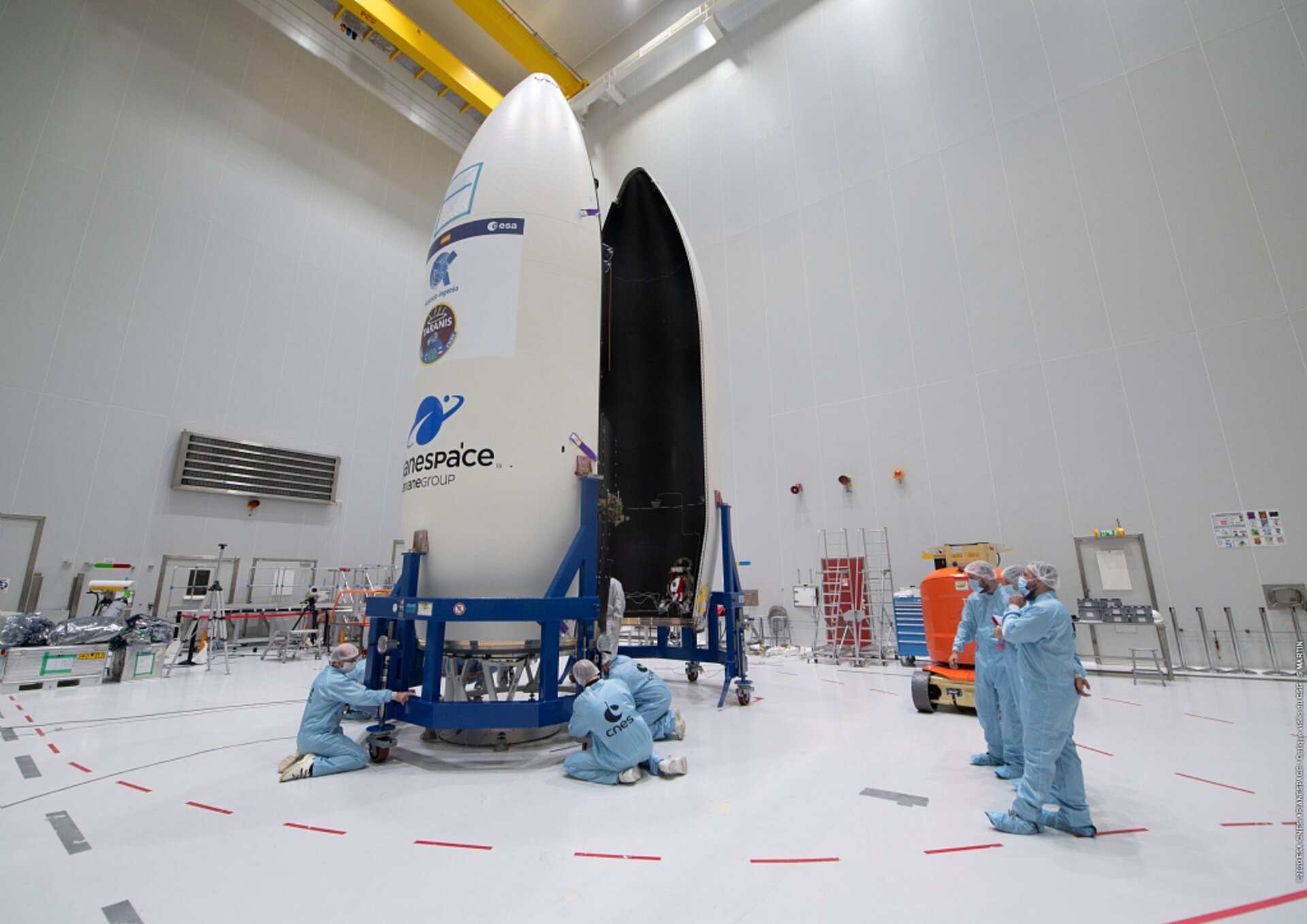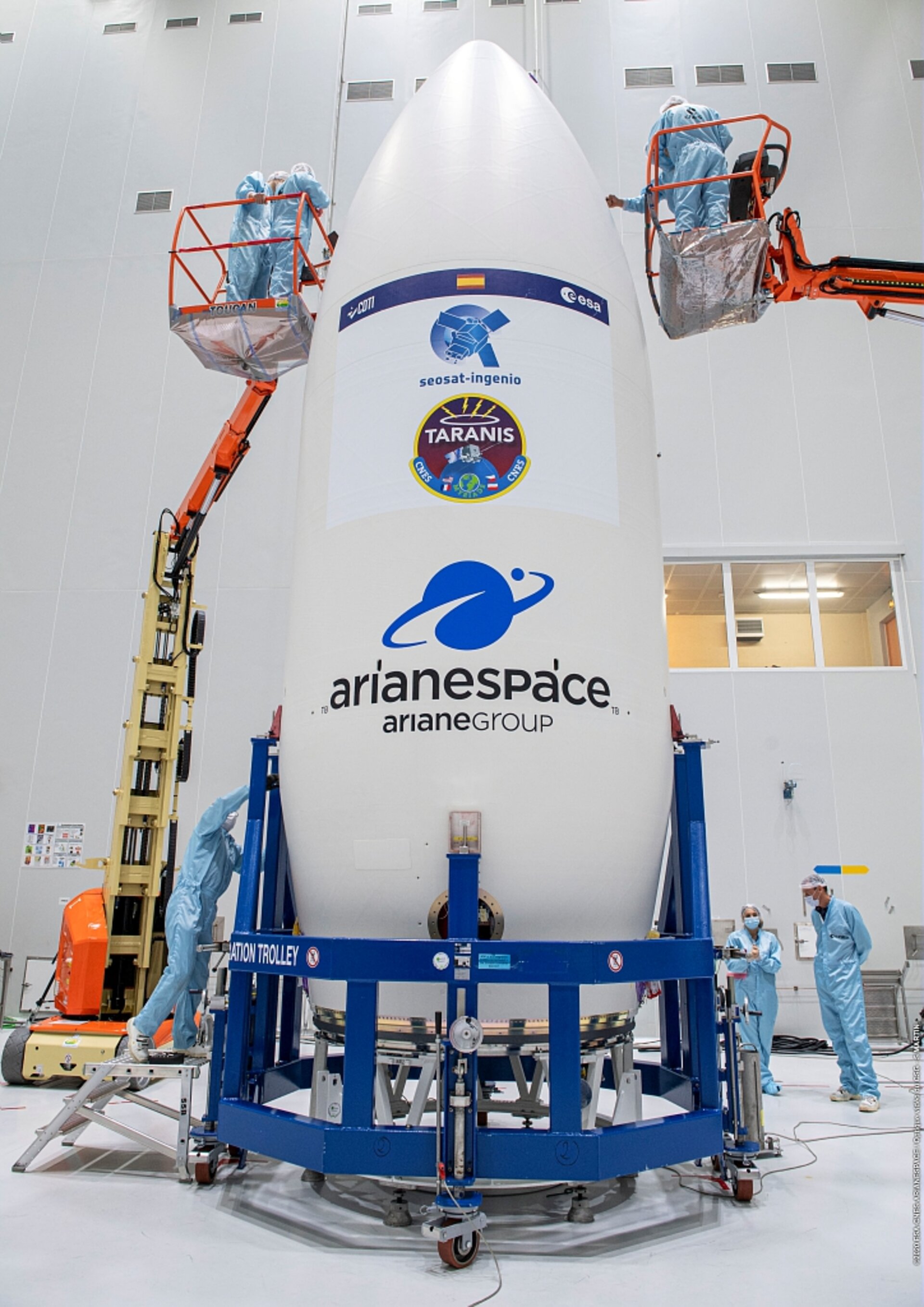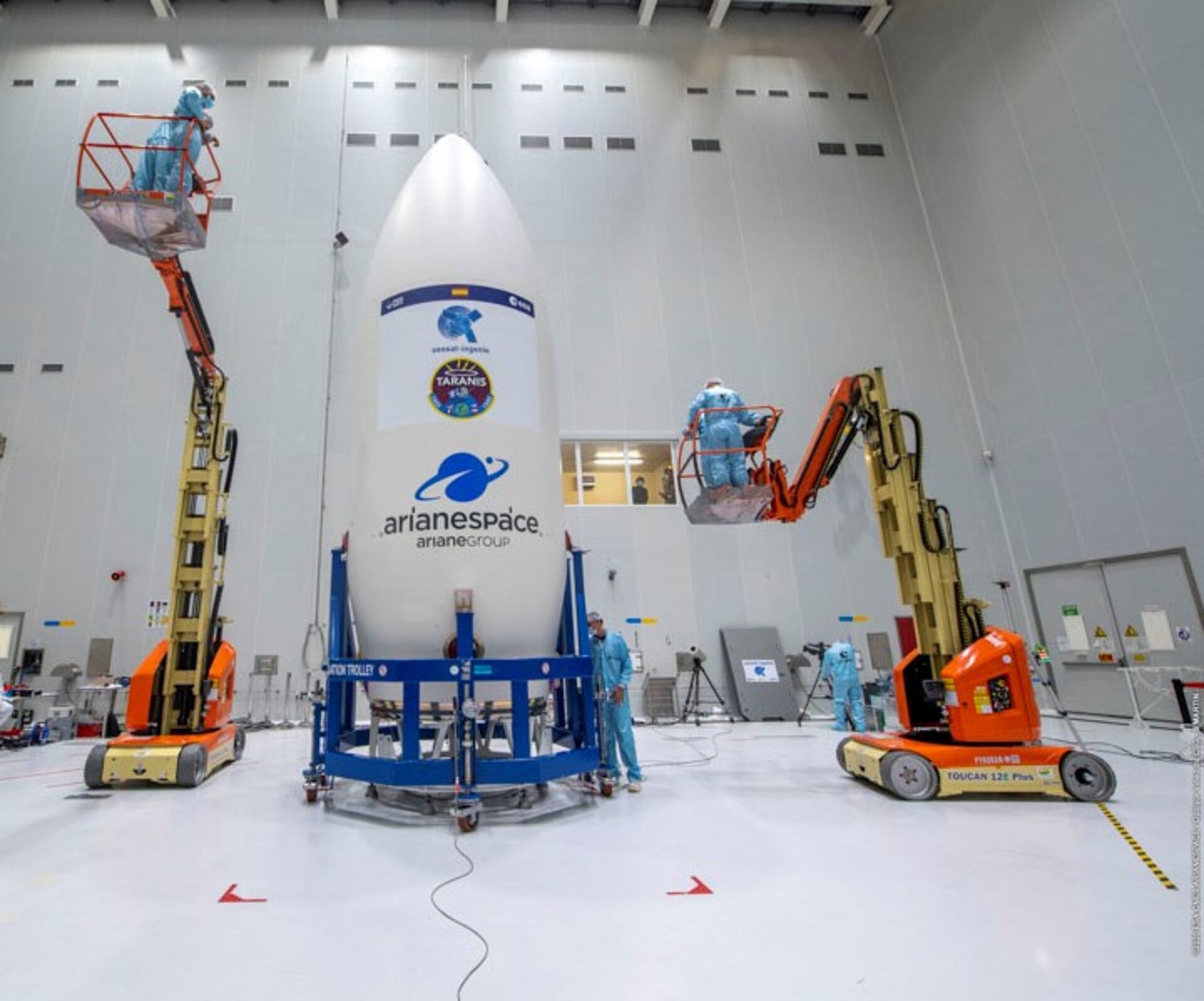25.09.2020
SEOSAT-Ingenio arrives in French Guiana

After leaving the Airbus premises in Madrid on 24 September, the Spanish high-resolution land imaging mission, known as SEOSAT-Ingenio, has arrived safely at Europe’s Spaceport in French Guiana, where it will be prepared for launch later this year.
Packed safely within protective containers, SEOSAT-Ingenio was transported together with its co-passenger, the CNES French space agency’s Taranis satellite – both scheduled for launch on a Vega rocket in November. Following the airplane off-loading procedures, SEOSAT-Ingenio was then transferred on a dedicated trailer for transport to Guiana Space Centre.
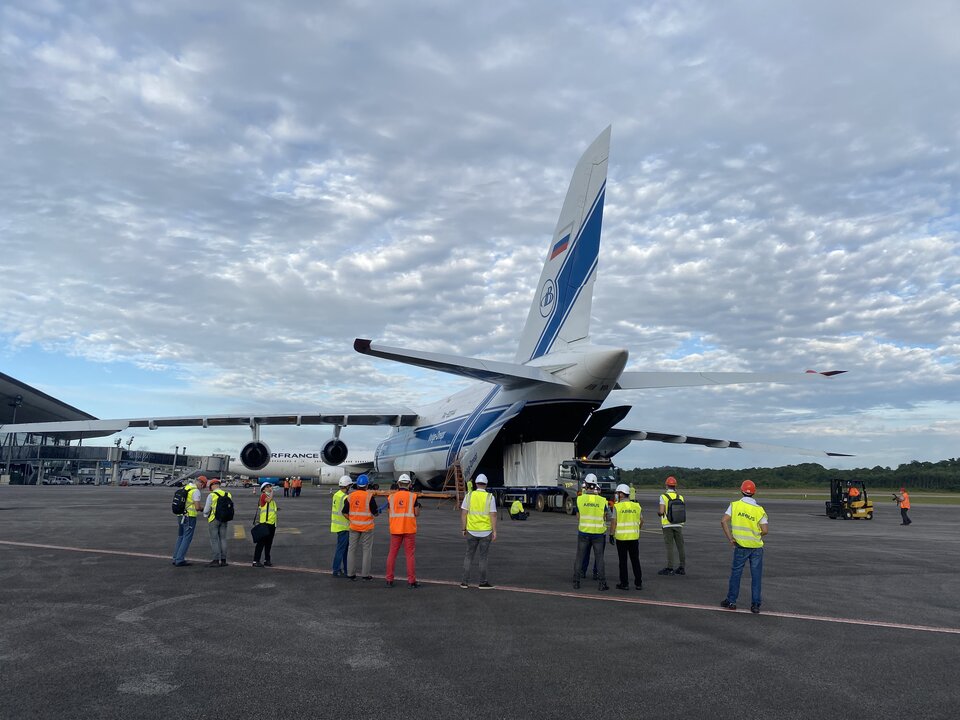
During the transfer, the convoy respected the speed limit of 50 km/h to avoid any shock to the satellite. After a journey of around two and a half hours, SEOSAT-Ingenio arrived at the Payload Preparation Complex. The arrival of the satellite marks a significant milestone for SEOSAT-Ingenio – an optical Earth-observation mission which will provide high-resolution images of Earth’s land cover.
ESA’s Project Manager for the mission, Alex Popescu, commented, “I am extremely excited that the launch is getting closer, and so is the team and all of the major Spanish space companies who have contributed to the development of the satellite and its ground segment. We are looking forward to delivering this state-of-the-art Earth-imaging system.”
The satellite will have a mass at liftoff of approximately 750 kg and will be placed in Sun-synchronous orbit at an altitude of around 670 km.
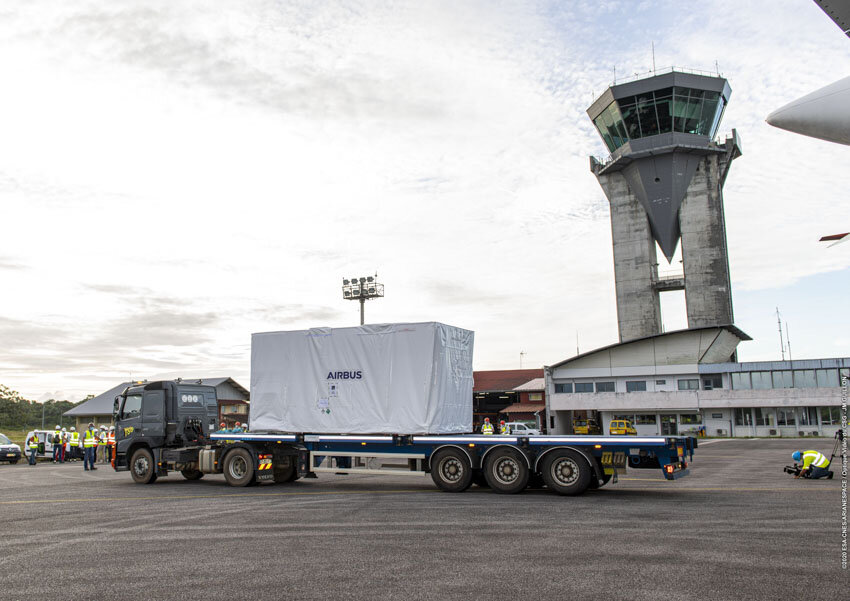
SEOSAT–Ingenio, which stands for Spanish Earth-observation satellite, carries a state-of-the-art dual camera that has the ability to image Earth’s land with a resolution of 2.5 m. It has the capability to look sideways, enabling it to access any point on Earth within just three days.
Information from SEOSAT–Ingenio will be used by different Spanish civil, institutional and government users, but also provide information for a wide variety of applications. These include cartography, monitoring land use, urban development and water management. The data will also be used to help map natural disasters such as floods, wildfires and earthquakes.
While SEOSAT–Ingenio is a Spanish national mission, it is the result of an international collaborative effort. The mission is funded by Spain’s Centre for the Development of Industrial Technology (CDTI) of the Ministry of Science and Innovation, but developed by ESA in the context of the European Earth Observation Architecture.

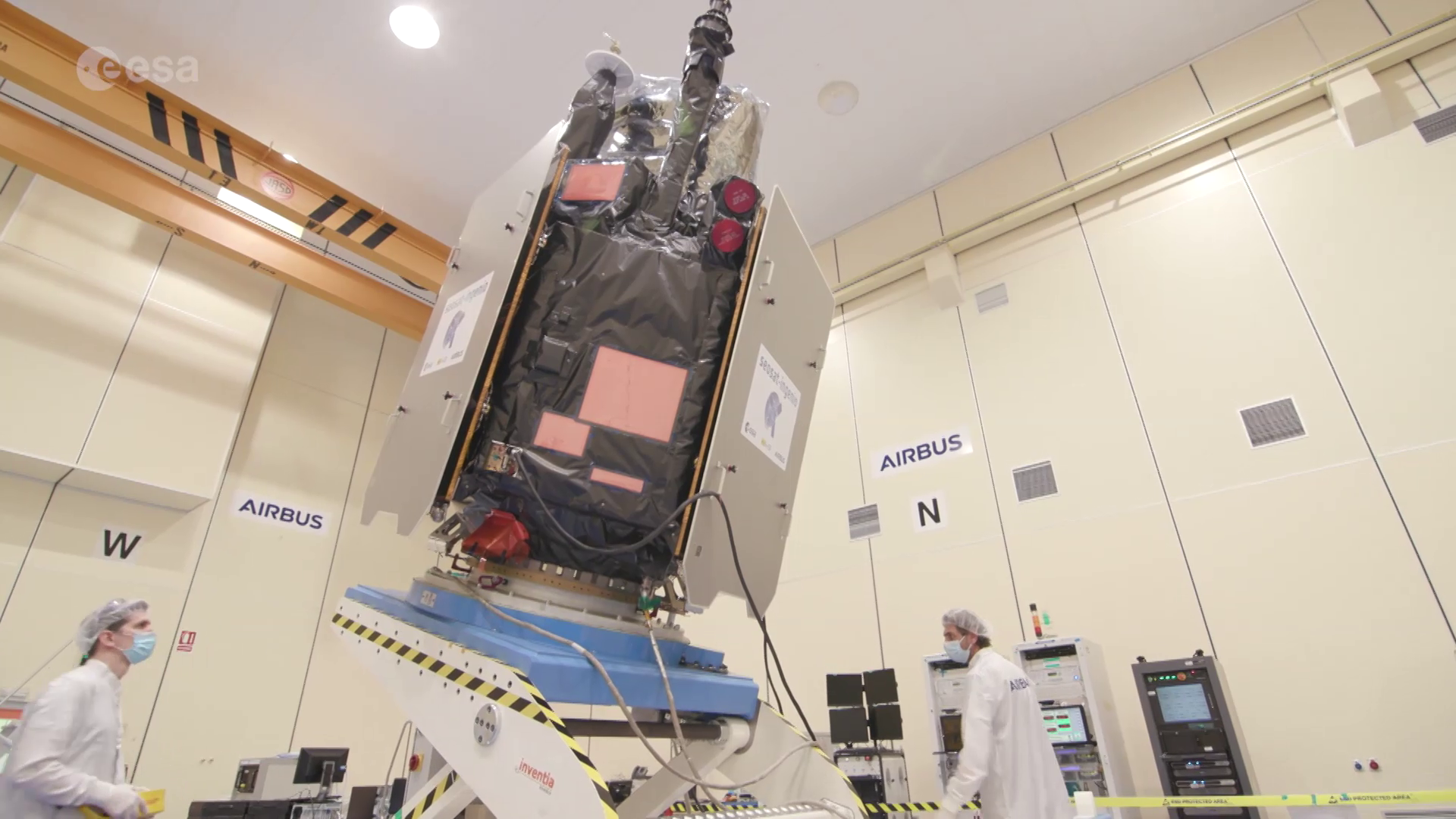
Access the video
ESA’s Director of Earth Observation Programmes, Josef Aschbacher, commented, “I am very pleased the satellite has arrived safe and sound in Kourou and we are all very much looking forward to its launch. SEOSAT-Ingenio has been developed through a very strong cooperation with Spain with the goal to develop space technology in Spain and to offer an important data source to users, in Spain, in Europe and globally. ”
Jorge Lomba Ferreras, Project Manager from CDTI, said, “SEOSAT-Ingenio is the space programme with the largest Spanish content ever, as Spanish industry is responsible for more than 80% of the industrial work. The capabilities developed by Spain for SEOSAT-Ingenio has been instrumental in the recent success of Spanish industry for Copernicus where, for the first time, Spain will be the prime contractor of a satellite developed by ESA with the European Commission as the final customer”.
Quelle: arianespace
----
Update: 10.11.2020
.
VEGA FLIGHT VV17
- LAUNCH DATE
- November 16, 2020
- PAYLOAD(S)
- SEOSAT-Ingenio, Taranis
- LAUNCH VEHICLE
- Vega
- LAUNCH SITE
- Spaceport, French Guiana (Guiana Space Center)
- CUSTOMER(S)
- European Space Agency on behalf of CDTI, CNES
- PRIME CONTRACTOR(S)
- Airbus Defence and Space, CNES
- ORBIT
- Sun-synchronous orbit
- STATUS
- Upcoming
For its seventh launch of the year – and the 17th to be performed by the Vega launcher since its first liftoff from the Guiana space center in 2012 – Arianespace will orbit two satellites: SEOSAT-Ingenio for ESA, on behalf of Spain’s Center for Development of Industrial Technology (CDTI), and TARANIS for CNES, the French space agency.
With this launch, Arianespace reasserts its primary mission by ensuring European independent access to space.

+++
- SEOSAT-Ingenio

-
By launching SEOSAT-Ingenio, the first Spanish Earth observation satellite, Ari anespace reinforces its relationship with Spain (fifth contributor at ESA) – a coun try that also is very involved in European launchers program.
SEOSAT-Ingenio is a high-resolution optical imaging mission of Spain – the flagship mission of the Spanish space strategic plan. Its mission is devoted to ensure an even coverage of the areas of national interest, providing a large operational capability in the capture of high-resolution multi-spectral land optical images for numerous user groups, as well as supporting and optimizing the development in Spain of teledetection-based applications in Spain.
The overall mission objective is to provide information for applications in cartography, land use, urban management, water management, environmental monitoring, risk management and security.
With its capability to look sideways, it can access any point on Earth within three days, and will be used to help map natural disasters such as floods, wildfires and earthquakes – as well as help with one of humankind’s biggest challenges: understanding and responding to climate change.

SEOSAT-Ingenio will be the 57th mission (79th satellite) to be launched by Arianespace for ESA (ESA/Earth observation programs directorate) at the benefit of Spain’s Center for Development of Industrial Technology (CDTI – Centro para el Desarrollo Tecnológico Industrial). INTA, the National Institute of Aerospace Technology (in Torrejon de Ardoz- Madrid) will own and operate the satellite.
The SEOSAT-Ingenio spacecraft is the first built by an industrial consortium of the Spanish space sector companies led by Airbus Defence and Space. SEOSAT-Ingenio will be the 128th Airbus Defence and Space satellite to be launched by Arianespace.
There are currently 20 Airbus Defence and Space satellites in Arianespace’s backlog. In addition, Airbus Defence and Space is also involved in the design and manufacturing of the OneWeb satellites to be deployed by Arianespace.
There are seven additional ESA missions (for nine satellites) in the Arianespace backlog.
- TARANIS
-

Arianespace at the service of the French space program with TARANIS, the CNES scientific satellite.
TARANIS (Tool for the Analysis of RAdiation from lightNIng and Sprites), the Celtic god of thunder and lightning, is the first satellite designed to observe luminous, radiative and electromagnetic phenomena occurring at altitudes of 20 to 100 km over thunderstorms.
Discovered 20 years ago, such transient luminous events (TLEs) such as red sprites, blue jets, elves, sprite halos, etc. remain shrouded in mystery. They are sometimes accompanied by terrestrial gamma-ray flashes (TGFs). The correlation between these TLEs and TGFs is one of the scientific questions the TARANIS mission hopes to answer. TLEs has been observed for the first time since the ROCSAT-2 satellite, renamed FORMOSAT-2, the second high-resolution Earth Observation satellite for the Taiwanese National Space Program Office (NSPO), manufactured Airbus Defence and Space.
The TARANIS microsatellite will fly over thousands of TLEs and TGFs for at least four years and will be capable of detecting these events and recording their luminous and radiative signatures at high resolution, as well as the electromagnetic perturbations they set off in Earth’s upper atmosphere. The payload includes numerous sensors to observe the TLEs and to perform in-situ measurements of perturbations caused on the local plasma (fields, waves and particles).
The TARANIS mission has three main objectives:
- Advance physical understanding of the links between TLEs (red sprites, blue jets, elves, sprite halos… currently named “Transient Luminous Events”) and TGFs (Terrestrial Gamma ray Flashes), in their source regions, and the environmental conditions (lightning activity, variations in the thermal plasma, occurrence of extensive atmospheric shower…).
- Identification of the generation mechanisms for TLEs and TGFs and, in particular, the particle and wave field events, which are involved in the generation processes or which are produced by the generation processes.
- Evaluation of the potential effects of TLEs, TGFs, and bursts of precipitated and accelerated electrons (in particular lightning induced electron precipitation and runaway electron beams) on the Earth atmosphere or on the radiation belts.
TARANIS will be the 18th satellite (including Pleiades satellites) to be launched by Arianespace for CNES as a customer.
TARANIS will be the seventh satellite to be launched by Arianespace for CNES as a manufacturer.
+++

Quelle: arianespace
+++

SEOSAT-Ingenio sealed from view
As preparations for the launch of SEOSAT-Ingenio continue on schedule, the team at Europe’s spaceport in Kourou have bid farewell to the satellite as it was sealed inside the rocket fairing. The spacecraft is currently scheduled to launch on the evening of Monday 16 November/morning of Tuesday 17 November.
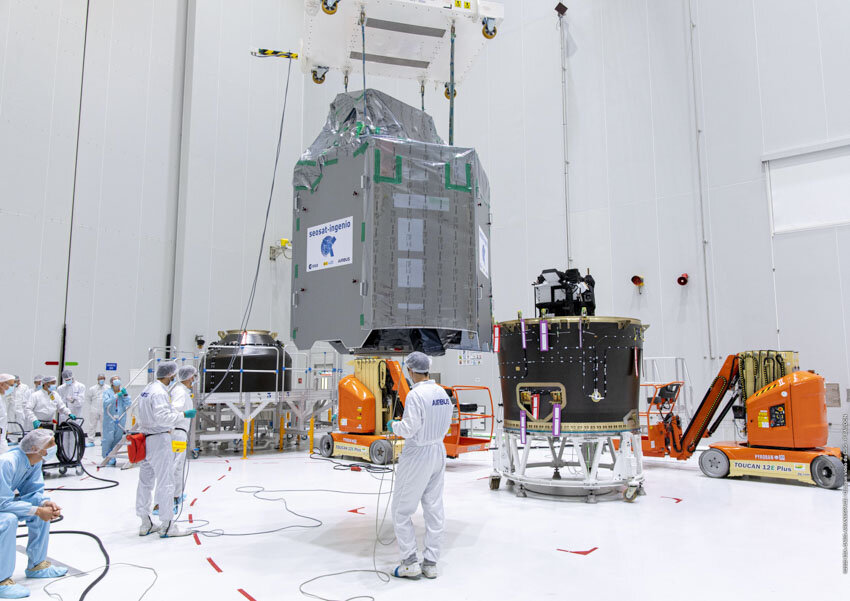
Placement of SEOSAT-Ingenio onto the Vega Secondary Payload Adapter SEOSAT-Ingenio, the new Spanish high-resolution land imaging mission, carries a state-of-the-art dual camera that can image Earth’s land with a resolution of 2.5 m. The satellite will benefit society through numerous disciplines such as cartography, agriculture, forestry, urban development and water management.
Since its arrival at the launch site in September, SEOSAT-Ingenio was put through a series of tests to make sure it is in good working order. Around two weeks ago, the satellite was fully fuelled, after which it was transferred to the Payload Processing Facility and was ‘mated’ on top of the upper part of the Vega Secondary Payload Adapter.
SEOSAT-Ingenio was then encapsulated in the rocket fairing, which protects it during the first part of the launch. The entire launch campaign team was there to wish farewell to the spacecraft as it was sealed from view.
ESA’s Gianfranco Spinella commented, “The encapsulation marks a significant step on the road to launch. From now on, we no longer have physical or visual access to the spacecraft. This means it is ready to join the launch vehicle on the launch pad to start its long journey and provide the images and data it was built for.
“This was a very emotional moment for all of us at the team here in Kourou, as well as for the many who have and are still contributing to the mission and cannot be present. This step in the launch campaign is primarily the result of the outstanding work performed by the prime industrial contractor Airbus Defence and Space - Spain. We are all very much looking forward to the launch next week!”
The next important step for SEOSAT-Ingenio will take place on Wednesday 11 November, when the satellite will be rolled out to the launch pad. Then on 16 November, the satellite will be launched into orbit along with the French space agency CNES’s Taranis satellite. SEOSAT-Ingenio will have a mass at liftoff of approximately 750 kg and will be placed in Sun-synchronous orbit at an altitude of around 670 km.
While SEOSAT–Ingenio is a Spanish national mission, it is the result of an international collaborative effort. The mission is funded by Spain’s Centre for the Development of Industrial Technology (CDTI) of the Ministry of Science and Innovation, but developed by ESA in the context of the European Earth Observation Architecture.
Other partners include Airbus Defence and Space, being the prime industrial contractor of the satellite, and SENER & INDRA, responsible for the payload and ground segment.
Information from SEOSAT–Ingenio will be used by different Spanish civil, institutional and government users, but also potentially by other European users in the framework of the European Union’s Copernicus programme and the Group on Earth Observations’ Global Earth Observation System of Systems.
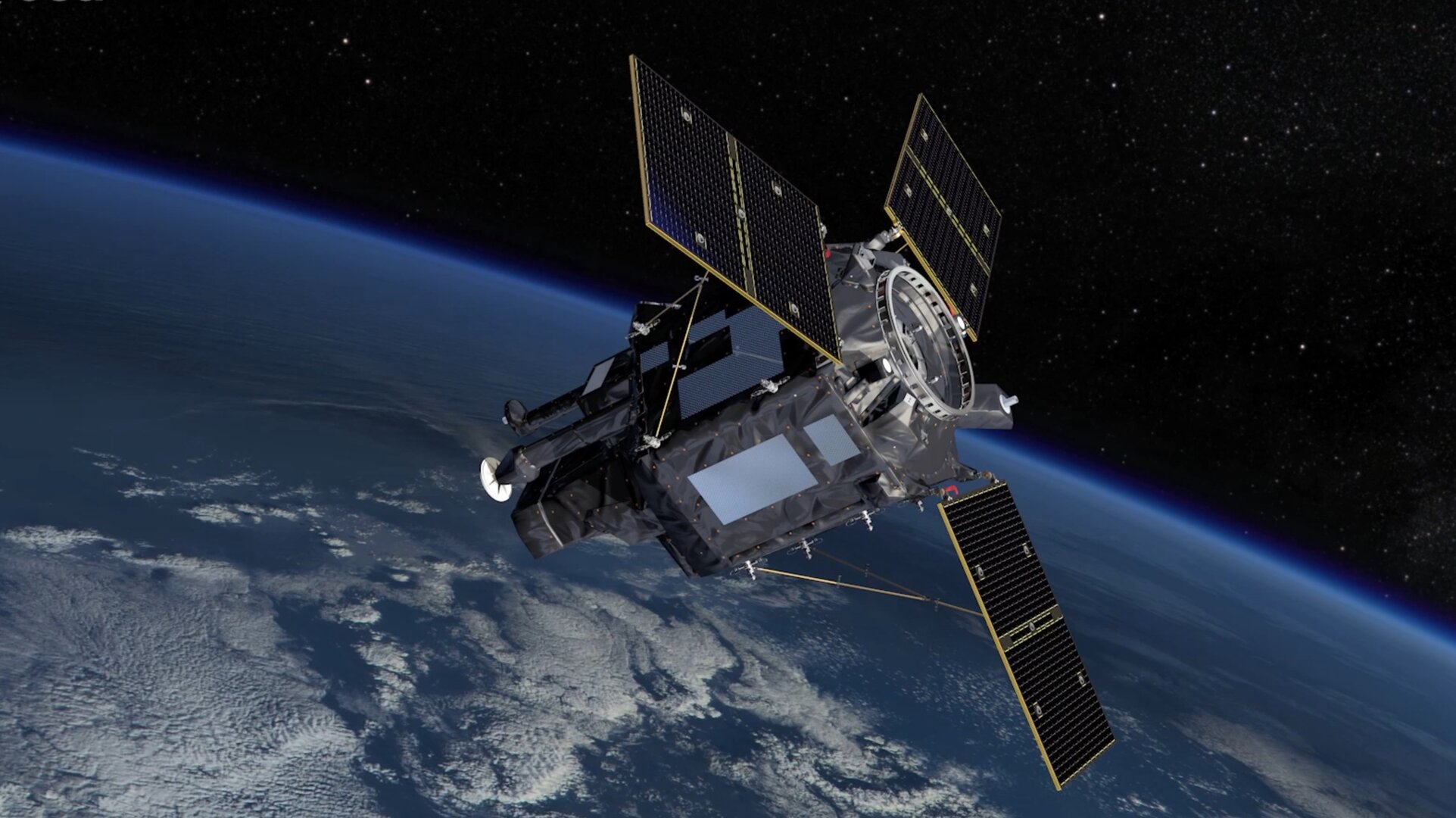 SEOSAT-Ingenio in orbitQuelle: ESA----Update: 15.11.2020.
SEOSAT-Ingenio in orbitQuelle: ESA----Update: 15.11.2020.SEOSAT-Ingenio hoisted into launch tower
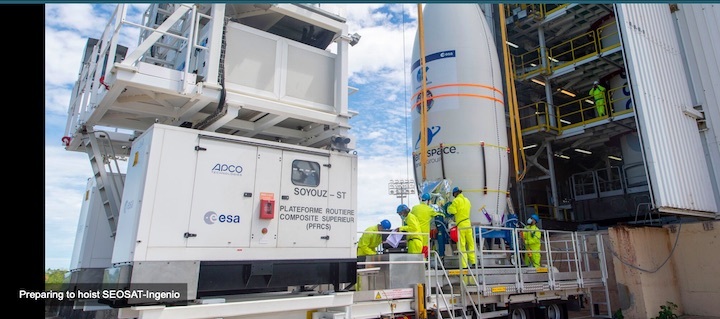

Ahead of its liftoff, scheduled on Tuesday 17 November 2020 at 02:52 CET (16 November 22:52 local time in Kourou), the SEOSAT-Ingenio satellite sealed in the rocket fairing has been hoisted into the Vega launch tower at Europe’s Spaceport in Kourou, French Guiana.
Since the satellite arrived at the launch site in September, it has been put through a series of tests, fuelled and encapsulated within the two half-shells of the rocket fairing, which protects it during the first part of the launch.
SEOSAT-Ingenio, the new Spanish high-resolution land imaging mission, carries a state-of-the-art dual camera that can image Earth’s land with a resolution of 2.5 m. The satellite will benefit society through numerous disciplines such as cartography, agriculture, forestry, urban development and water management.
While SEOSAT–Ingenio is a Spanish national mission, it is the result of an international collaborative effort. The mission is funded by Spain’s Centre for the Development of Industrial Technology (CDTI) of the Ministry of Science and Innovation, but developed by ESA in the context of the European Earth Observation Architecture.
Other partners include Airbus Defence and Space, being the prime industrial contractor of the satellite, and SENER & INDRA, responsible for the payload and ground segment.
Information from SEOSAT–Ingenio will be used by different Spanish civil, institutional and government users, but also potentially by other European users in the framework of the European Union’s Copernicus programme and the Group on Earth Observations’ Global Earth Observation System of Systems.
The mission is set for liftoff on Tuesday 17 November 2020 at 02:52 CET (16 November 22:52 local time in Kourou) along with the French space agency CNES’s Taranis satellite.
Quelle: ESA
----
Update: 16.11.2020
.
Watch live: Launch of the next Earth-observing satellite SEOSAT-Ingenio

Watch the launch of SEOSAT-Ingenio, the Spanish high-resolution land imaging mission, on ESA Web TV on Tuesday 17 November from 02:30 CET (16 November 22:30 local time in Kourou).
SEOSAT-Ingenio will be launched on a Vega rocket from Europe’s Spaceport in French Guiana on Tuesday 17 November at 02:52 CET (16 November 22:52 local time in Kourou). The weather will be monitored constantly until the precise moment of liftoff to determine whether or not to authorise the launch.
Join as experts from ESA, Spain’s Centre for the Development of Industrial Technology (CDTI) of the Ministry of Science and Innovation, Arianespace and Airbus discussing details regarding the mission.
Follow online
Tune in to ESA Web TV 02:30-04:40 CET to watch the launch live.
Zooming in on our planet
SEOSAT–Ingenio, which stands for Spanish Earth-observation satellite, carries a state-of-the-art dual camera that has the ability to image Earth’s land with a resolution of 2.5 m. It has the capability to look sideways, enabling it to access any point on Earth within just three days.
Information from SEOSAT–Ingenio will be used by different Spanish civil, institutional and government users, but also provide information for a wide variety of applications. These include cartography, monitoring land use, urban development and water management. The data will also be used to help map natural disasters such as floods, wildfires and earthquakes.
While SEOSAT–Ingenio is a Spanish national mission, it is the result of an international collaborative effort. The mission is funded by Spain’s Centre for the Development of Industrial Technology (CDTI) of the Ministry of Science and Innovation, but developed by ESA in the context of the European Earth Observation Architecture.
Quelle: ESA
----
Update: 17.11.2020
.
Erfolgreicher Start von VEGA FLIGHT VV17 mit SEOSAT-Ingenio


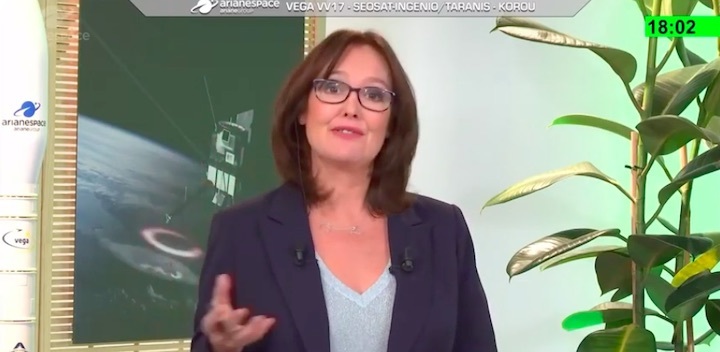


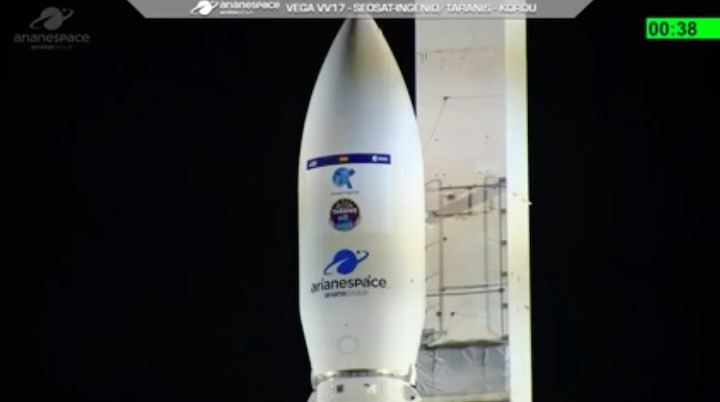


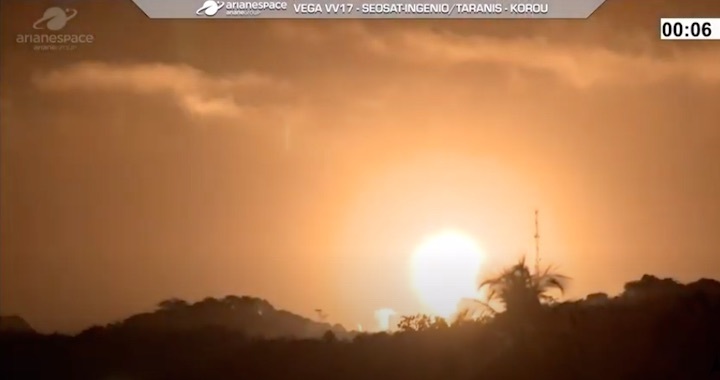
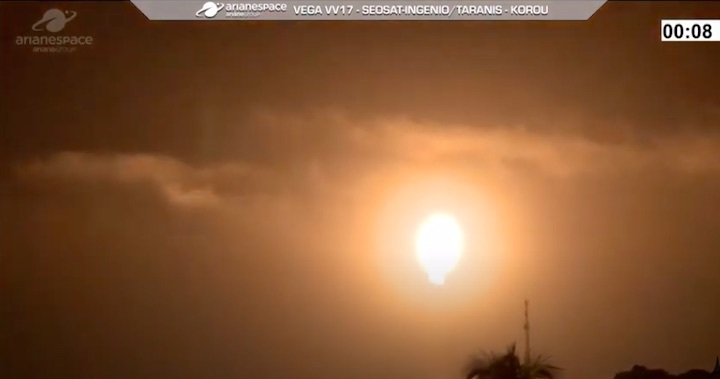
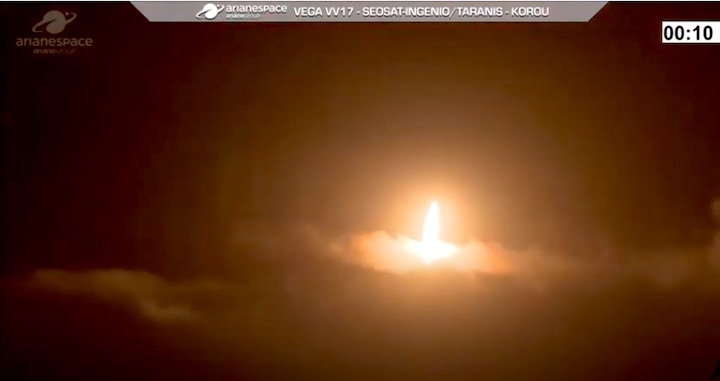


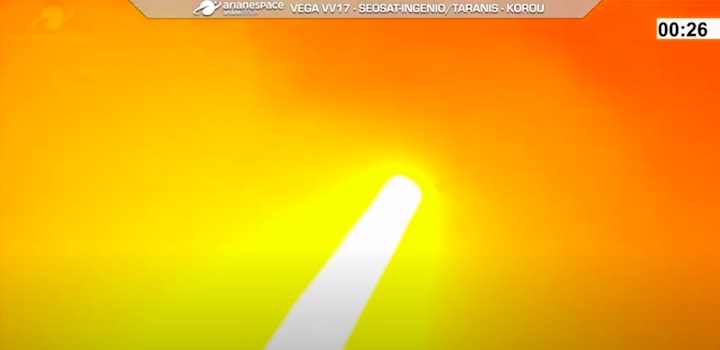






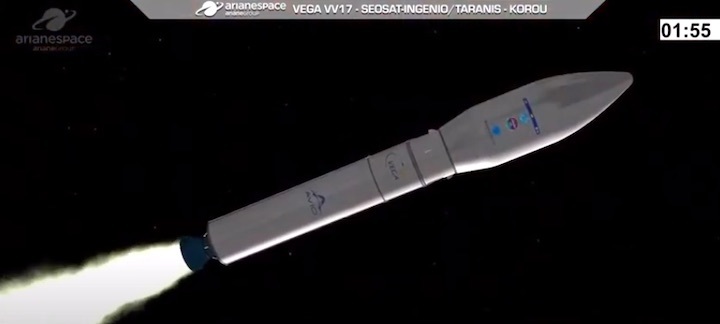
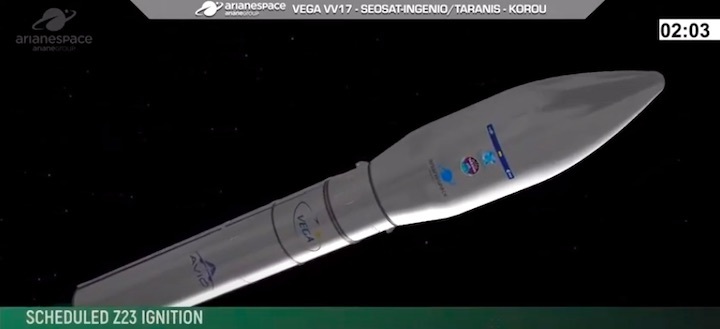




Quelle: arianespace
+++
Update: 17.11.2020
.
Vega flight VV17 SEOSAT-Ingenio / TARANIS mission failure
8 minutes after liftoff of Vega mission VV17, following the first ignition of the engine of the Avum upper stage, a deviation of trajectory was identified, entailing the loss of the mission. Telemetry data analyses are in progress to determine the cause of this failure.
There will be a press conference Tuesday, November 17th, 2020 at 10:00 am Kourou time/2:00 pm Paris time. The call-in number will be provided to the media by Arianespace.
Quelle: ESA
+++
Vega Flight VV17: source of anomaly identified; Inquiry Commission established
Arianespace has announced the loss of the Vega VV17 mission, which was carrying two payloads: SEOSAT-Ingenio, an earth-science observation satellite for the European Spatial Agency (ESA); and TARANIS for France’s National Centre for Space Studies (CNES).
Two and a half months after Vega’s successful return to flight, the Vega launch vehicle lifted off as scheduled on November 16 at 22:52 (local time in Kourou, French Guyana) from the Guyana Space Center. The first three stages functioned nominally until the ignition of the AVUM upper stage, eight minutes after departure from the launch pad. At that time, a degraded trajectory was detected, followed by a loss of control of the vehicle and the subsequent loss of the mission.
The launcher fell in a completely uninhabited area close to the drop zone planned for the Zefiro 9 stage.
Initial investigations conducted overnight with the available data identified a problem related to the integration of the fourth-stage AVUM nozzle activation system is the most likely cause of the loss of control of the launcher.
In accordance with their standard protocols, Arianespace and the European Space Agency (ESA) will set up an independent Inquiry Commission jointly chaired by Daniel Neuenschwander, Director of Space Transport at ESA, and Stéphane Israël, Arianespace Chief Executive Officer, on November 18. The Commission will provide detailed evidence to explain why steps were not taken to identify and correct the integration error. The Commission will formulate a road map for the Vega’s return to flight under conditions of complete reliability. Arianespace and ESA will jointly present the findings of this commission.
Arianespace expresses its deepest apologies to the clients and the satellite manufacturers involved in this mission.
Quelle: arianespace



